Architecture news: letter from France
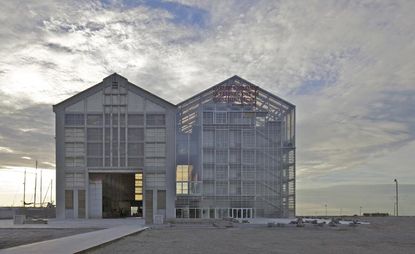
A Napoleon III villa in a Parisian suburb, squatted by artists and musicians; a cathedral-like hangar, the vestige of Dunkirk's naval industry that used to define the life cycle of the entire city; a new, 240m-long bridge in the French Alps. This is just a sample of France's recent crop of architectural projects, and they have at least one thing in common: they are all cultural facilities that offer a draw both through their content and their site.
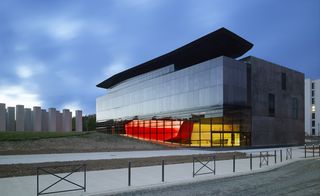
See more of France's new wave of culture-focused architecture projects
The selection transcends scale as these buildings range from the monumental National Archives to a small community hall in a 6.000-strong town in Provençe. Interaction with the context is equally broad ranging. Some projects merge with the surroundings, such as L'Atelier, a mediathèque, music and dance school in Normandy, or La Panacée, a contemporary culture hub in Montpellier. Others work with the inherent qualities of their respective site to produce a visually arresting result. In a few cases contextual awareness urges the architects to touch the ground lightly - for example the Jean-Claude Carrière Theater in Montpellier can be disassembled and rebuilt in a new location, while the biodiversity museum in Beautour is raised on pilotis, thus protecting its very subject.
Often these venues have more to reveal than what is expected; think of designing a concert hall as a fully operational musical instrument (which is what Le Métaphone in Oignies does) or incorporating a student dorm into an art centre (as happens at La Panacée), or an exhibition space in the base of a bridge (the Pile Pont Expo in Saint-Gervais Les Bains does just that).
They may share key qualities but all these projects are scattered across the country in response to France's current cultural decentralization challenge (which was indeed the motive behind establishing a network of regional art centers, or FRACs). They also provide excellent incentive to venture outside Paris on a countrywide architectural pilgrimage.
Wallpaper* Newsletter
Receive our daily digest of inspiration, escapism and design stories from around the world direct to your inbox
-
 ‘100R’ by Hydro invites top designers to work in revolutionary recycled aluminium
‘100R’ by Hydro invites top designers to work in revolutionary recycled aluminiumHydro’s ‘100R’ exhibition at Milan Design Week 2024 matches designers including Inga Sempé and Max Lamb with Hydro CIRCAL 100R, the first industrial-scale aluminium material made entirely of post-consumer scrap
By Simon Mills Published
-
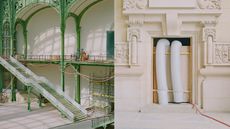 Grand Palais restoration in Paris through the lens of champion fencer Enzo Lefort
Grand Palais restoration in Paris through the lens of champion fencer Enzo LefortAs Paris’ Grand Palais prepares to reopen following extensive restoration by Chatillon Architectes, we visit the site with champion fencer and photographer Enzo Lefort, who documented the space ahead of the Olympic Games 2024
By Ellie Stathaki Published
-
 Lap-See Lam’s giant dragon head and tail takes over the Nordic Pavilion at the Venice Biennale
Lap-See Lam’s giant dragon head and tail takes over the Nordic Pavilion at the Venice BiennaleLap-See Lam takes over The Nordic Pavilion with a giant dragon head and tail, while her dynamically composed ‘Altersea Opera’ considers language and representation
By Emily Steer Published
-
 Grand Palais restoration in Paris through the lens of champion fencer Enzo Lefort
Grand Palais restoration in Paris through the lens of champion fencer Enzo LefortAs Paris’ Grand Palais prepares to reopen following extensive restoration by Chatillon Architectes, we visit the site with champion fencer and photographer Enzo Lefort, who documented the space ahead of the Olympic Games 2024
By Ellie Stathaki Published
-
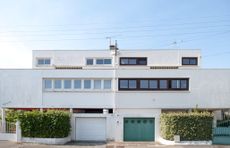 Royan Architecture Month showcases French modernism by the sea
Royan Architecture Month showcases French modernism by the seaRoyan Architecture Month 2024 launches in the French city, where many travel to see midcentury builds by the sea, from Notre Dame church to Palais des Congrès
By Stacy Suaya Published
-
 Dip into the Paris pools and swimming culture enriching the 2024 Olympic Games
Dip into the Paris pools and swimming culture enriching the 2024 Olympic GamesParis pools, in the Olympics and beyond, have inspired fun, wellness and a love of sports in the French capital
By Ellen Himelfarb Published
-
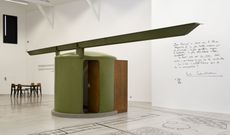 Jean Prouvé’s House of Better Days on show at Galerie Patrick Seguin in Paris
Jean Prouvé’s House of Better Days on show at Galerie Patrick Seguin in ParisThe Maison Les Jours Meilleurs, or House of Better Days, by Jean Prouvé is explored in a new show at Galerie Patrick Seguin in Paris
By Harriet Thorpe Published
-
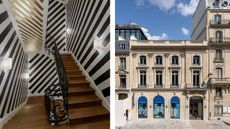 Hauser & Wirth Paris by Laplace is a winning restoration in the Wallpaper* Design Awards 2024
Hauser & Wirth Paris by Laplace is a winning restoration in the Wallpaper* Design Awards 2024Hauser & Wirth Paris by Laplace sees the architectural agency named Best Restoration Kings, breathing new life into an 1877 hôtel particulier near the Champs-Elysées
By Amy Serafin Published
-
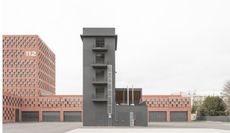 A fire station cuts a bold figure in the city of Rennes
A fire station cuts a bold figure in the city of RennesThis fire station by LAN becomes a new landmark for Rennes, France
By Ellie Stathaki Published
-
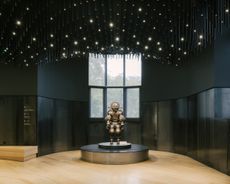 A refreshed Musée National de la Marine shows off its expanded exhibition spaces in France
A refreshed Musée National de la Marine shows off its expanded exhibition spaces in FranceMusée National de la Marine in France has been brought to the 21st century by a team comprising h2o Architectes, Snøhetta and exhibition designers Casson Mann
By Clare Dowdy Published
-
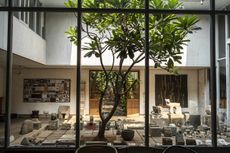 Studio Mumbai exhibition at Fondation Cartier explores craft, architecture and ‘making space’
Studio Mumbai exhibition at Fondation Cartier explores craft, architecture and ‘making space’A Studio Mumbai exhibition at Paris’ Fondation Cartier explores the trailblazing Indian practice’s inspired, hands-on approach
By Amy Serafin Published